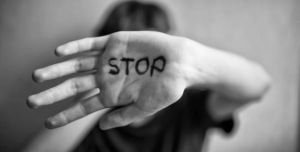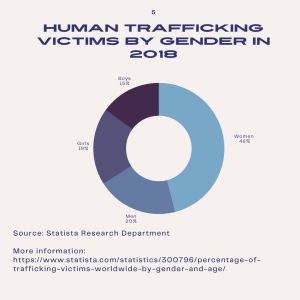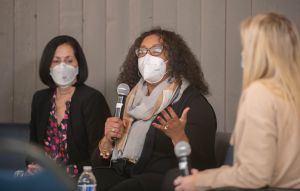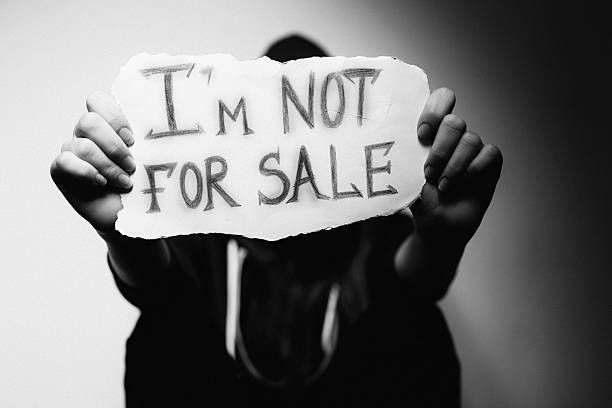
A frequent visitor arrived once again in the emergency room.
This time a nurse spotted a bar code like an item at a grocery store. Immediately, she knew the frightening reality behind what some may perceive to be an innocuous tattoo. But it wasn’t; it was among signs that can be tied to victims of human trafficking.
This realistic scenario unfolded in a Pennsylvania hospital, but it underscores the importance of knowing the signs of human trafficking crimes, according to Abbie Newman, CEO of Mission Kids, a child advocacy and anti-trafficking organization in Montgomery County.
Human trafficking is a type of human rights abuse where people profit from the exploitation of others mainly through the use of force, fraud or coercion to manipulate victims into engaging in sex acts or labor/services.

Newman, during a human trafficking awareness panel at Cabrini, said it’s important that the general public do its part to help combat this ever rampant issue, as there are many different signs that could point to the fact that someone is being trafficked. According to the Department of Homeland Security, there are 13 major signs that people should be looking for to possibly spot human trafficking.
One sign the department wants people to be on the lookout for is a sudden or dramatic change in behavior? Though this is not always an indicator that someone is a victim of human trafficking, this can be an early warning sign that someone has fallen victim to a trafficker.
There are many different ways you could tell that someone may be a victim of trafficking. Some of those signs have no access to personal identification and can’t clarify their address.
“A good sign of someone being trafficked is when you see girls who typically have like regular clothing or dress a certain way and then all of a sudden they wear jewelry or designer bag,” Carla Clanagan, director of a program that helps survivors heal, said.
The Unified Judicial System of Pennsylvania and The Polaris Project, a national database of human trafficking crimes and hub for reporting those crimes, warns that certain people may be more vulnerable than others.
Those facing poverty or are having trouble paying for basic needs, those who are in an unstable living situation and those with a history of domestic violence victimization are all more likely to be victimized. Others at risk include those caregivers or family members with a substance use issue, those who are runaways or those who are a part of the foster care system.
In fact, National Center for Homeless Education said, as many as one-third of teens who runaway or thrown away youth will become involved in prostitution within 48 hours of leaving home.
Clanagan, Newman and long-time investigative reporter, Walt Hunter, were a part of a human trafficking awareness panel held at Cabrini University Feb. 1. and was about Human Trafficking.

-Photo by Erica Zebrowski
“Everyone can help by learning the types of trafficking and paying attention to the people around us,” The National Human Trafficking Hotline said.
This hotline has a lot of different signs on how to recognize whether someone is being trafficked and provides information on who is most vulnerable, how traffickers lure people in and who traffickers are.
According to the National Human Trafficking Hotline and Polaris Project, some of the most vulnerable for human trafficking are people addicted to drugs or alcohol, have previously experienced other forms of violence such as sexual abuse or domestic violence and undocumented immigrants.
“Many victims of trafficking however do not see themselves as victims of trafficking,” Newman, said.
Human trafficking is an important issue with 25 million people who are trafficked and yet many of the victims of this crime don’t even know that they are victims. The panelists said human trafficking is an issue all around the country but especially right here in King of Prussia.
If you or you know a loved one that is a victim/ possibly victim of human trafficking please call 1 (888) 373-7888 or text HELP to 233733.




Horriffic!- I have to think about refugees from Honduras on theier way through Central America and Mexico. Many of them are assaulted although they almost possess nothing. But there comes out that especially those are spotted out as victims who have relatives in the US who are then contacted by the kidnapers to blackmail money transfers. – So the questeion is,
from which sources or technics do the criminals receive their information?
Cris